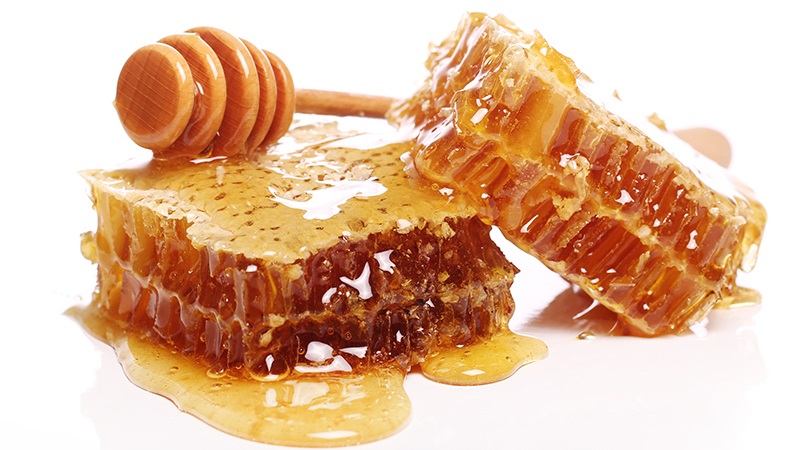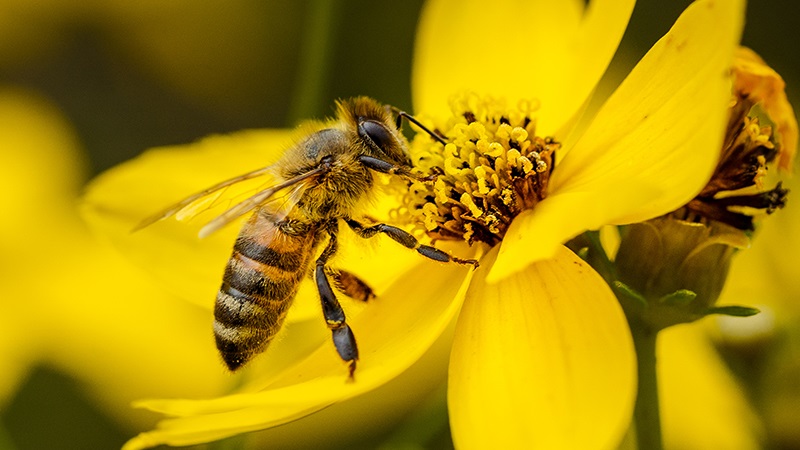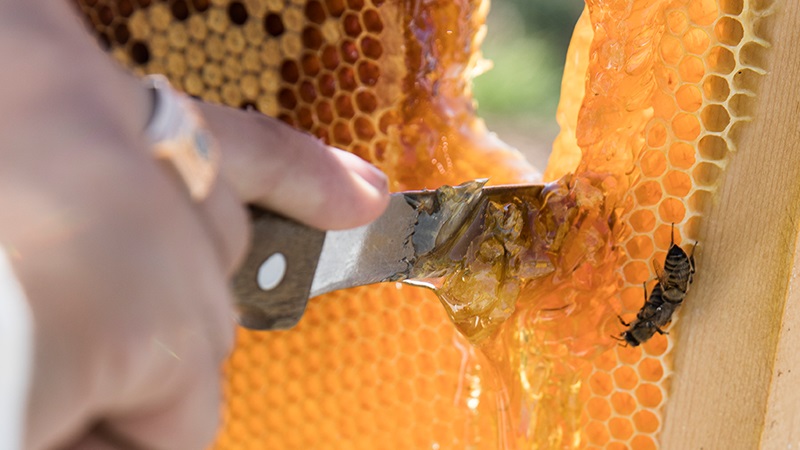“We Can Say; The Nobel Waggle Dance May Be Awarded As the World’s Sweetest Dance”
Honey is a natural, sweet, viscous liquid made by honeybees from floral nectar, Honeybees (Apis mellifera) are the famous for social art of dancing known as waggle dance which indicates to other bees the direction and distance of a source of food during the nectar collecting. It is one of nature’s best examples of food processing systems arising through the collaboration of two different kingdoms, such as insect and plant nectars. Honey’s color ranges from Pale yellow/ golden yellow to dark brown, depending on the area of flowering plants, vegetation, and extraction method. It is possibly one of nature’s most astounding chemical compositions, as well as one of its oldest preservative fabrications, having been utilized for centuries to prevent bacterial growth or decomposition. Its long-lasting devotion is found in 3,000-year-old honey, which is still edible during tomb excavations in Egypt; consequently, it is ideally suited for the longest natural preservative activity ever witnessed by others. From 2023 to 2030, the global honey market is estimated to be valued at USD 9.01 billion, with a 5.3% annual growth rate. It has been seen to trend during the post-endemic period.
What is the natural process of Honey?
Honey is made naturally by bees collecting nectar from flowers and regurgitating it into honey; enzymatic activity in bee hypopharyngeal glands produces an invertase enzyme that hydrolyzes the disaccharide sucrose in nectar to monosaccharides of glucose and fructose, converting it to honey; and water evaporation occurs by bees fanning their wings vigorously over the open cells, creating air currents that aid in the comb. This method reduces the water content to roughly 17-20%, which is low enough to suppress fermentation and allow the honey to be kept without rotting, resulting in thick and pleasant honey. Finally, it protects the honey, and bees cover the honeycomb with wax, a process known as cell capping. As a result of the combination of regurgitation, evaporation, enzymatic activity, and cell capping, nectar is transformed into honey. The ripening phase is critical for honey preservation because the decreased water content reduces microbe growth and fermentation, maintaining the long-term stability of the honey kept in the hive.
What are the uses and health benefits of Honey?
Honey nectar has a wide range of uses in the food and beverage industries, pharmaceutical industries, Ayurveda, and cosmetics, and it is deeply ingrained in all religious rites. Honey is a natural sweetener that is high in antioxidants, anti-inflammatories, and minerals. It contains antimicrobial effects, promotes wound healing, and can alleviate cold symptoms. Honey can also help manage blood sugar levels, potentially protecting against metabolic syndrome and type 2 diabetes. It has the ability to alleviate sore throats and enhance wound healing. It is, however, still a type of sugar and should be used in moderation. Due to the risk of botulism poisoning, it is not recommended for newborn babies under the age of 12 months. Despite its health benefits, honey should not be used in place of a well-balanced diet. It is a key element in many Ayurvedic medicines such as Chyawanprash. Honey acts as a carrier for herbs, improving absorption and increasing potency. Honey works as a natural preservative in “lehams” (herbal medicinal pastes) and “arishtas” (fermented herbal concoctions), prolonging the shelf life of these preparations. Honey is used in Ayurvedic skincare treatments for its moisturizing and antimicrobial properties. Furthermore, honey’s ability to balance the three doshas (Vata, Pitta, and Kapha) is consistent with Ayurvedic principles, making it a staple in traditional medical practices. With the addition of one, it is also utilized for weight loss.
What is the classification of Honey?
Honey can be classed based on several factors, including botanical origin, production, processing, and form. Furthermore, the components and test quality vary greatly depending on the method of manufacturing, local climatic circumstances, extraction procedure, and storage. As previously discussed, the following honey can be classified:
- Botanical Origin: This refers to the floral or plant source of nectar or honeydew collected by bees. Manuka, alfalfa, eucalyptus, acacia, buckwheat, jarrah, lavender, rosemary, mangrove forest, and Heather honey is well-known for being the most expensive and finest quality honey among the approximately 300 different varieties of honey based on the blooming variety.
- Floral type: Honey is classified into two types based on its botanical origin: Monofloral honey and Multifloral honey. Blossom honey is collected mostly from flower nectar, whereas honeydew or forest honey is created by bees after collecting “honeydew” from plant saps.
- Production and Processing: This refers to the process of extracting, filtering, pasteurizing, or otherwise treating honey. In these ways, processed honey differs from raw honey.
- Form of nature: This refers to the physical state of honey, such as liquid, creamed, granulated, or unprocessed.
Why and how Honey is a soft target for adulteration
It is a haven for adulteration due to its great demand, the wild technique of generating pure honey, the dwindling honeybee population, the royal price level, and limited output. On the other hand, apiculture honey is available to deceive customers with misleading claims of wild-origin honey. Furthermore, it is produced by feeding different sugary syrups to bees during honey production or directly in addition to different sugary syrups or other adulterations, posing problems for buyers or genuine honey producers in the market in terms of uniform price rates and authenticity.
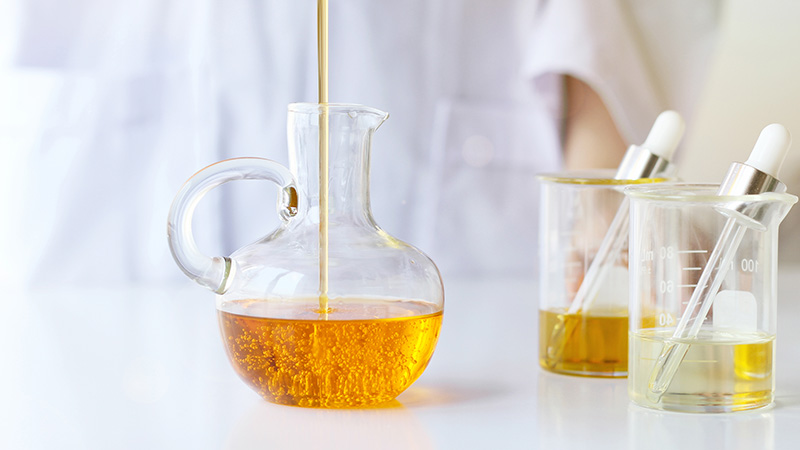
What are the methods and parameters used for the quality control of the Honey?
Honey quality is primarily determined by several methods: IS 4941:1994 and AOAC 21st edition, 2019, Harmonised Method for International Honey Commission. The following parameter is used for the evaluation quality control of honey.
1. Moisture content:
Method: Refractometry or Karl Fischer titration or Oven dry. Honey should typically have a moisture content of less than 20%. High moisture content can lead to fermentation and spoilage.
2. pH Level:
Method: By pH meter. Honey’s pH is typically acidic, ranging from 3.2 to 4.6. Deviations from this range may indicate fermentation or adulteration.
3. Diastase Activity:
Method: Diastase activity is an enzyme present in honey, and its activity can be measured using the Schade or Phadebas methods. Diastase activity provides an indication of the honey’s freshness and whether it has been overheated during processing.
4. Hydroxymethylfurfural (HMF) Content:
Method: By Spectrophotometry. HMF is formed during the heating or storage of honey. Elevated levels may indicate improper handling or aging. It should be less than 80 mg/kg.
5. Color:
Method: Pfund color grading or the Lovibond scale. Honey color varies from light to dark, and it can be an indicator of the floral source. However, excessive darkening may suggest overheating or adulteration.
6. Acidity: (As formic acid)
Method: Titration. Total acidity is measured to ensure it falls within an acceptable range. High acidity may indicate fermentation or adulteration.
7. Foreign Materials and Impurities:
Method: Visual inspection and filtration. Honey should be free from foreign materials such as bee parts, wax, or debris. Filtration is often used to remove these impurities.
8. Electrical Conductivity:
Method: Conductivity meter. Electrical conductivity can be used to detect adulteration with added sugars, as pure honey has low conductivity.
9. Microbial Analysis:
Method: Plate count method, Colony count methods, or PCR (Polymerase Chain Reaction) for specific pathogens. Honey should be free from harmful microorganisms, and the total microbial count should be within acceptable limits.
10. Sensory Evaluation:
Method: Organoleptic evaluation by trained tasters. Sensory analysis assesses taste, aroma, color, and overall quality. It is an important aspect of honey quality control.
11. Adulteration Testing through NMR:
Methods: Nuclear Magnetic Resonance (NMR), Stable Isotope Ratio Analysis (SIRA), and other sophisticated techniques. These methods help detect adulteration and verify the authenticity of honey at chemical component levels by enabling the identification and quantification of the spectral patterns. It can detect exogenous sugars, verify the country of origin of honey, verification of botanical variety, analysis of the composition, and freshness detection of atypical samples.
12. Rheological Properties:
Method: Viscosity measurement. Assessing the viscosity of honey provides information about its texture and consistency.
Thus, continuous testing on the aforementioned parameters, as well as adherence to quality control measures, aid in ensuring that those honey products meet both safety and consumer satisfaction standards. The European Honey Directive and the Codex Alimentarius Standard for Honey specify international honey standards. The International Honey Commission (IHC) was established in 1990 to revise and publish honey procedures and standards on a regular basis. However, the parameter limit values are determined by the country’s honey legislation and where the honey is delivered for marketing. The limit value of parameters is shown in the table in accordance with FSSAI regulations (FSSR 2011).
Table sources from FSSAI Compendium Version 1 (0 1. 0 9. 2023)
| Sl. No | Parameters | Limits |
| 1 | Specific gravity at 27° C, Min. | 1.35 |
| 2 | Moisture, percent. by mass, Max. | 20 |
| 3 | Total reducing sugars, per cent. by mass, Min. | |
| (a) For the Honey not listed below | 65.0 | |
| (b) Carvia callosa and Honeydew honey | 60.0 | |
| (c) Blends of Honeydew honey with blossom honey | 45.0 | |
| 4 | Sucrose, per cent. by mass, Max. | |
| (a) For the Honey not listed below | 5.0 | |
| (b) Carvia callosa and Honeydew honey, Max. | 10.0 | |
| 5 | Fructose to Glucose ratio (F/G Ratio) | 0.95-1.50 |
| 6 | Total Ash, per cent. by mass, Max. | 0.50 |
| 7 | (a) Acidity expressed as formic acid, percent. by mass, Max. | 0.20 |
| (b) Free Acidity milliequivalents acid/ 1000 g, Max. | 50.0 | |
| 8 | Hydroxymethylfurfural (HMF) mg/kg, Max. | 80.0 |
| 9 | Diastase activity, Schade units per gram, Min. | 3.0 |
| 10 | Water insoluble matters, per cent. by mass, Max. | |
| (a) For the Honey not listed below | 0.10 | |
| (b) For Pressed honey | 0.5 | |
| 11 | C4 Sugar, per cent. by mass, Max. | 7.0 |
| 12 | The pollen count and plant element/g, Min. | 5000 |
| 13 | 2-Acetylfuran-3-Glucopyranoside (2-AFGP) as Marker for Rice Syrup | Absent** |
| 14 | Foreign oligosaccharides (Max. Percent Peak Area) | 0.7 |
| 15 | Proline, mg/kg, Min. | 180.0 |
| 16 | Electrical Conductivity: | |
| (a) Honeys are not listed under Honeydew, Max. | 0.8mS/cm | |
| (b) Honeys listed under Honeydew, Min. | 0.8mS/cm | |
| 17 | (a) Δδ13C Max*. (Maximum difference between all measured δ13C values); per mil (‰) | ± 2.1 |
| (b) Δδ13C Fru- Glu (The difference in 13C/12C ratio between fructose and glucose); per mil (‰) | ±1.0 | |
| (c) Δδ13C Protein – Honey (The difference in 13C/12C between honey and its associated protein extract); per mil(‰) | ≥ – 1.0 | |
*∆δ13C Max. is the maximum difference observed between all possible isotopic ratios measured (∆δ13C fructose-disaccharides / ∆δ13C fructose-trisaccharides/ ∆δ13C fructose – protein/∆δ13C glucose-disaccharides /∆δ13C glucose-trisaccharides /∆δ13C glucoseprotein/∆δ13C disaccharides-trisaccharides/ ∆δ13C disaccharides-protein /∆δ13C trisaccharides-protein).
**Minimum Required Performance Level- 1mg/kg]
**Minimum Required Performance Level- 1mg/kg]
How to perform honey test at home before buy
Before buying honey, you should consider following the test at home as follows
- Water Test: The Food Safety and Standards Authority of India (FSSAI) recommends a simple water test to discover the major adulterant by putting temperate water into a glass and adding one spoon of honey to it. The fact that honey settles to the bottom of the glass shows that it is not contaminated, but honey that quickly dissolves in water indicates impurity.
- The Flame Test: Try to put a piece of cotton on fire after dipping it in honey. Pure honey should burn rather than splutter.
- Vinegar Test: Mix in some water and 2-3 drops of vinegar essence into the honey. If the solution becomes frothy, it is most certainly contaminated honey.
- The Thumb Test: Put a drop of honey on your thumbnail. If it remains intact and doesn’t spill, it’s likely pure
However, the final confirmation comes through the laboratory testing which it would say the quality of honey.
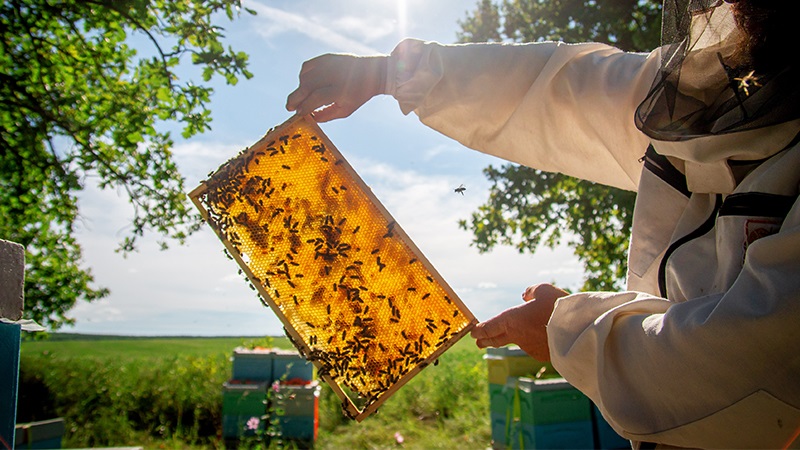
What are the parameters used to maintain quality control of Honey performed at CPL?
Cultivator Phyto Lab Pvt. Ltd. is an AYUSH, APEDA, FSSAI, and NABL accredited laboratory that performs proximate, and other chemical analysis in accordance with national and international regulatory bodies. Color, aroma, moisture, added coloring matter, shelf-life studies, preservatives, extraneous matter, total ash, acid-insoluble ash, HMF, apparent reducing sugars, apparent sucrose, diastase activity, and water-insoluble matter, water-soluble or insoluble ash, fructose/glucose content as per International honey standards, the sucrose content and electrical conductivity are proposed. Other important quality factors such as invertase activity, proline, and specific rotation, pesticide residue testing, mycotoxin testing, Antibiotic testing, mineral, and heavy metal testing are among the test parameters.
Authors: Dr. Sanjoy Gupta & Sajid Hussain
References:
- https://www.grandviewresearch.com/industry-analysis/honey-market
- Kek, S.P., Chin, N.L., Tan, S.W. et al. Classification of Honey from Its Bee Origin via Chemical Profiles and Mineral Content. Food Anal. Methods 10, 19–30 (2017). https://doi.org/10.1007/s12161-016-0544-0
- Bougrini, M., Tahri, K., Saidi, T. et al. Classification of Honey According to Geographical and Botanical Origins and Detection of Its Adulteration Using Voltammetric Electronic Tongue. Food Anal. Methods 9, 2161–2173 (2016). https://doi.org/10.1007/s12161-015-0393-2
- Almeida-Muradian LB (2013) Tetragonisca angustula Pot-honey compared to Apis mellifera honey from Brazil. In: Vit P, Pedro SR, Roubik D (eds) Pot-honey: a legacy of stingless bees. Springer, New York, USA, pp. 375–382
- https://www.bruker.com/en/products-and-solutions/mr/nmr-food-solutions/honey-profiling.html
- https://www.consciousfood.com/blogs/conscious-lifestyle/how-to-check-for-adulteration-in-honey
- https://www.ncbi.nlm.nih.gov/pmc/articles/PMC4456044/pdf/40201_2015_Article_189.pdf
- https://www.skyquestt.com/report/honey-market#:~:text=What%20is%20the%20global%20market,period%20(2023%2D2030).

